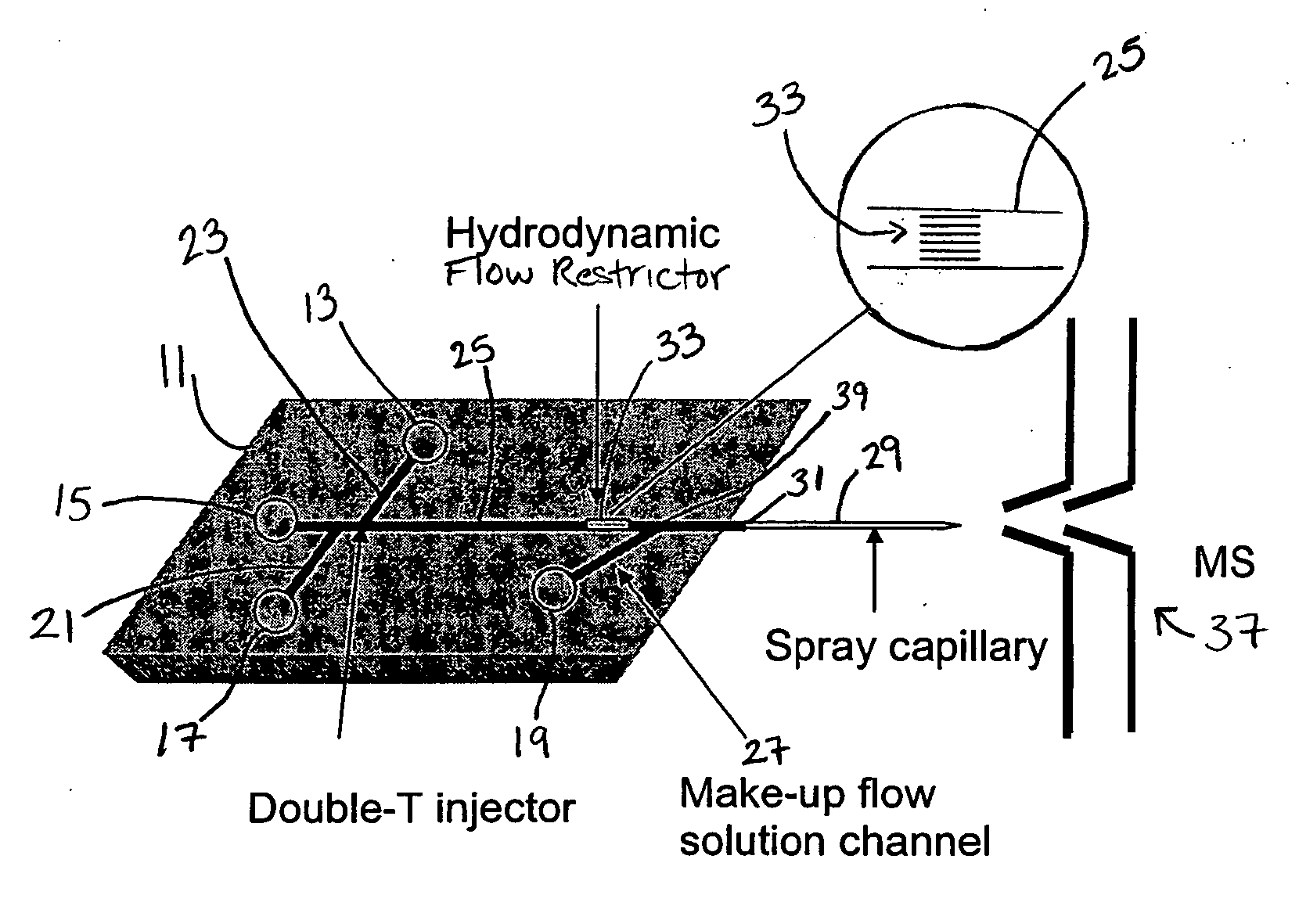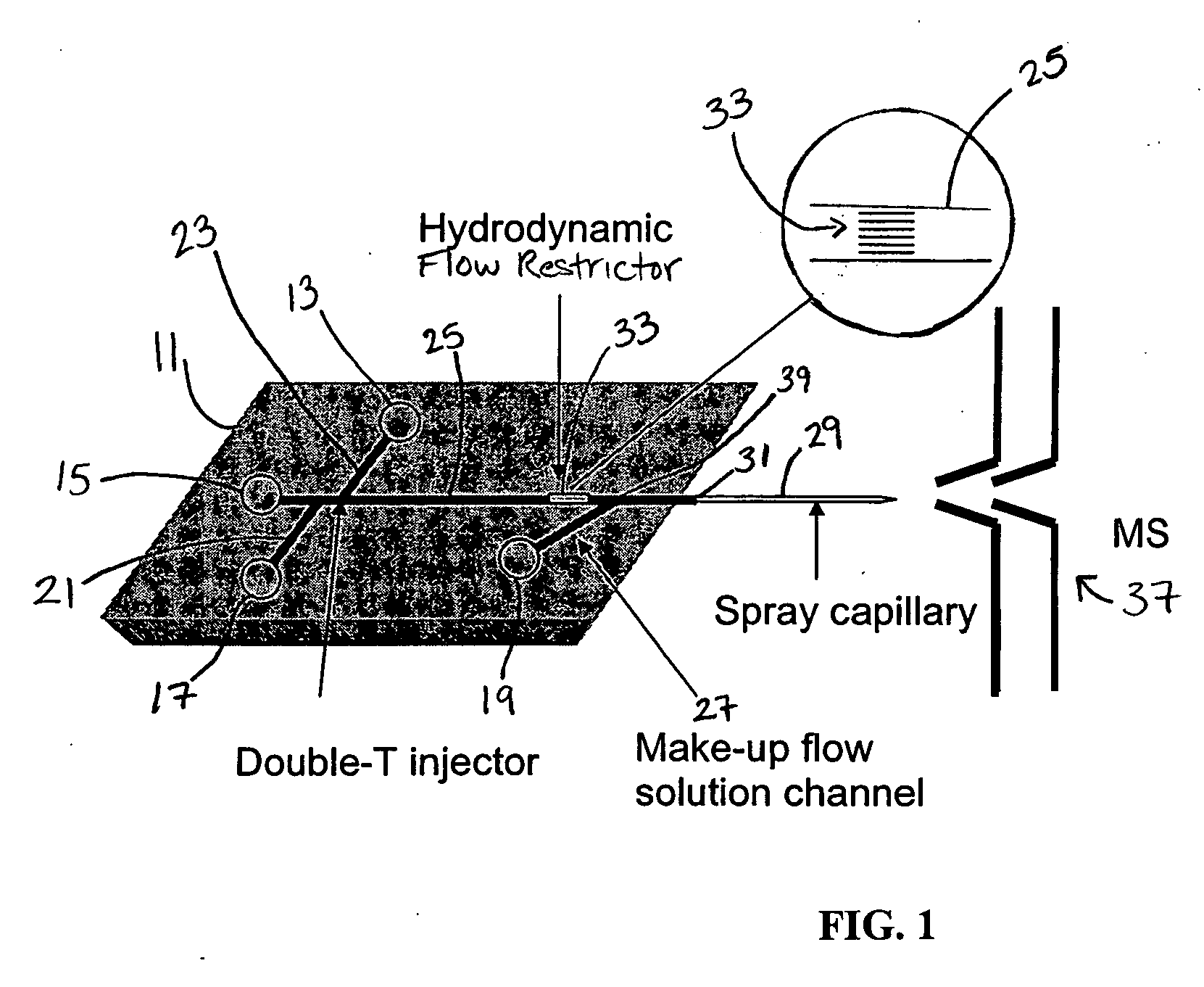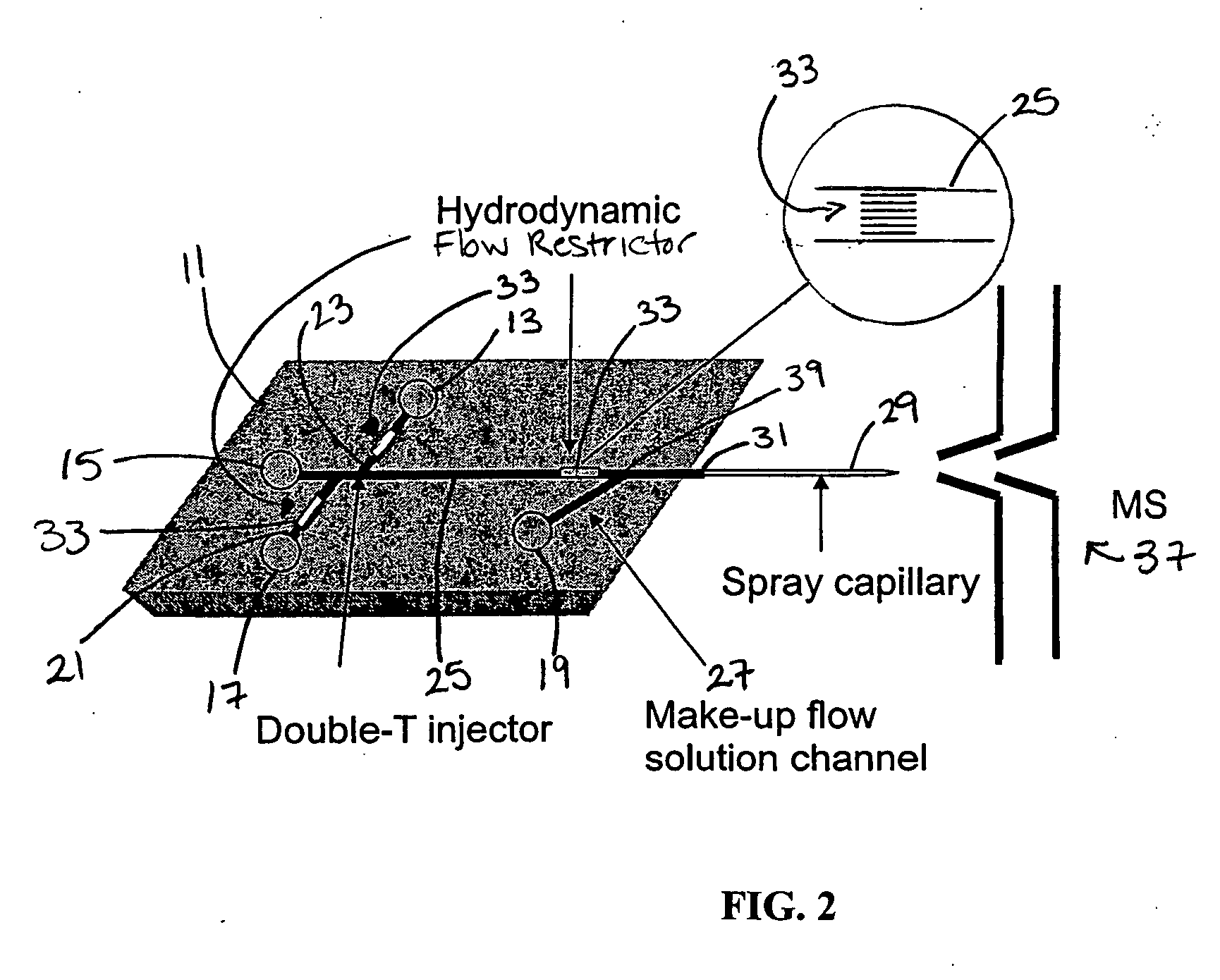Apparatus and method for coupling microfluidic systems with electrospray ionization mass spectrometry utilizing a hydrodynamic flow restrictor
a microfluidic system and electrospray ionization technology, applied in chemical methods analysis, material testing goods, particle separator tubes, etc., can solve the problems of hdr not providing adequate resistance to flow, difficult to fill the channel, and complicating the flow through the electrophoretic channel of the devi
- Summary
- Abstract
- Description
- Claims
- Application Information
AI Technical Summary
Benefits of technology
Problems solved by technology
Method used
Image
Examples
Embodiment Construction
[0024] In an embodiment, the microchip-ESI-MS interface integrates the introduction of a sheath solution and application of the electrospray voltage onto the microfluidic device. In an embodiment, the interface design substantially prevents back-flow of solution into the separation channel and allows use of an electrophoretic system with low EOF. The use of low EOF systems is particularly important for proteins, because coatings that minimize protein absorption also minimize EOF. In an embodiment, the apparatus and method can decouple the ESI and capillary electrophoresis (“CE”) voltages to enable upstream fluidic control for sample handling while samples are infused into the mass spectrometer.
[0025]FIG. 1 shows an embodiment wherein a microfluidic device 11 is engaged to a mass spectrometer 37. The microfluidic device 11 comprises a main channel 25 wherein the main channel engages an input channel 21 and a waste channel 23. In an embodiment, a high voltage electrode 15 is position...
PUM
 Login to View More
Login to View More Abstract
Description
Claims
Application Information
 Login to View More
Login to View More - R&D
- Intellectual Property
- Life Sciences
- Materials
- Tech Scout
- Unparalleled Data Quality
- Higher Quality Content
- 60% Fewer Hallucinations
Browse by: Latest US Patents, China's latest patents, Technical Efficacy Thesaurus, Application Domain, Technology Topic, Popular Technical Reports.
© 2025 PatSnap. All rights reserved.Legal|Privacy policy|Modern Slavery Act Transparency Statement|Sitemap|About US| Contact US: help@patsnap.com



